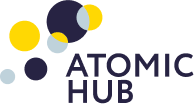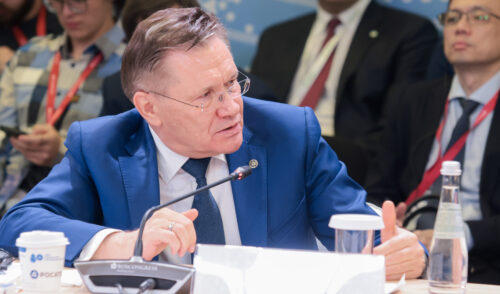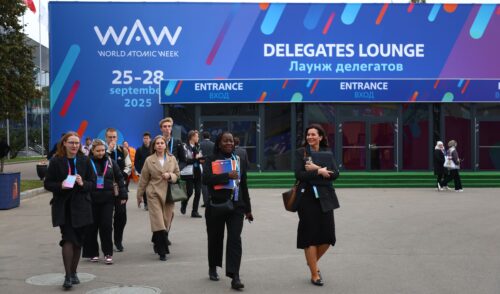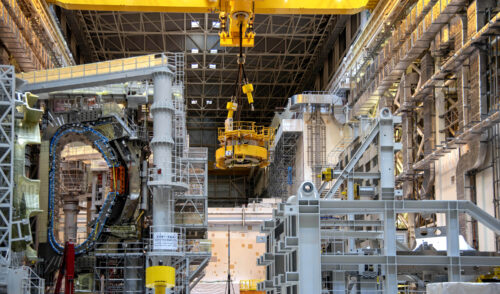
21st Century Technologies
back to contentsRosatom presented its latest solutions at the Future Technologies Forum held in Moscow in late February. Experts from the Russian nuclear corporation spoke about the state of affairs in knowledge-intensive industries and shared insights into the prospects for ground-breaking research. Below are the details.
Showcasing achievements
The clou of the exhibition was a rabbit with an equivalent of a blood vessel implanted in its femoral artery. The blood vessel was grown by Rosatom scientists in the so-called bio fabricator. “More than a month has passed since the transplant; the rabbit is alive, healthy and generally quite well-fed,” Rosatom Director General Alexey Likhachev told Russian President Vladimir Putin. Moscow Mayor Sergey Sobyanin showed the president a sample lithium-ion cell for the batteries that will be produced at Rosatom’s gigafactory in the Moscow region from 2026.
A carbon-fiber polyhedron attracted attention of the visitors to the booth of the Russian nuclear corporation. It was created by Rosatom’s composite materials division using the latest robotic spatial grid winding technique. The visitors also learned about the operating principles of an encapsulation unit for radiopharmaceuticals. It puts diagnostic and therapeutic radionuclides into biodegradable microspheres for easy delivery to the body tissues. Another exhibit at the booth was beryllium looking like silver shavings placed in a glass container. Beryllium is added to structural alloys for spacecraft and rockets to make them stronger and lighter.
Secret of success
Kirill Komarov, First Deputy Director General for Corporate Development and International Business at Rosatom, spoke about the key factor of success at the session entitled New Materials Sector Prospects: Product – Production – Distribution. “It is impossible to create competitive materials and production technology with a focus on the domestic market only. We have to be competitive on a global scale. In this respect, the success achieved by Rosatom in the global nuclear market is our guiding star in developing new materials,” he said.
He also noted that Rosatom strove to create products outperforming global counterparts. “This is the approach we have followed in developing polymer composite materials, and we will follow it in other fields, such as rare-earth elements and additive technologies,” Kirill Komarov emphasized.
“We have to be competitive on a global scale”
Kirill Komarov
First Deputy Director General for Corporate Development and International Business at Rosatom
Energy and matter
Alexander Zvir, Deputy Director for Production at the Research Institute of Atomic Reactors (RIAR), spoke at the session entitled Materials for Nuclear Power Engineering and told the audience about the rare isotopes produced at RIAR and its cutting-edge facilities synthesizing new elements of the Mendeleev table.
Pavel Piskarev, Head of Research at the Efremov Research Institute of Electrophysical Equipment, spoke about the materials for controlled thermonuclear fusion. He was confident in his speech that mankind would have access to thermonuclear energy in the near future. He also presented an innovative Russian-designed composite material made of tungsten and copper. It will be used in a ‘reactor technology’ tokamak project being now implemented in Russia.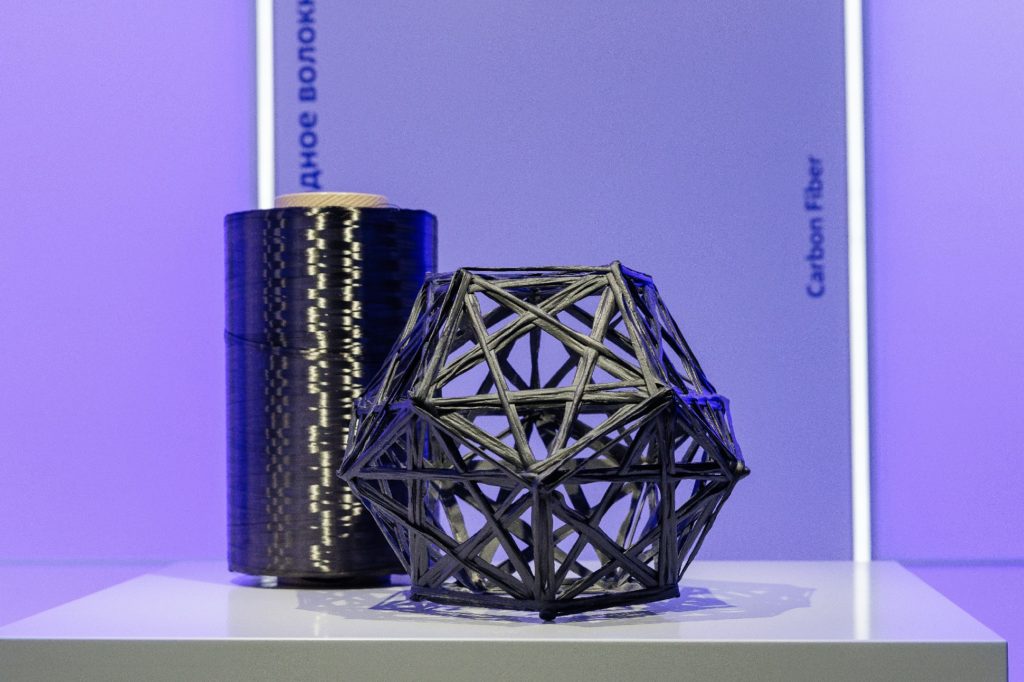
Alexander Zherebtsov, Head of Technology and Materials Development at Proryv JSC, spoke about the development of a small-scale robotic facility for spent nuclear fuel reprocessing. It will require enhanced performance materials for pyrochemical reactions involving chloride melt. Russian researchers are developing zirconium oxide ceramics for this purpose.
Hydrogen discussion
The Future Energy Materials session focused on the prospects of hydrogen energy. Ulyana Zavorotnaya from the National University of Science and Technology emphasized that the efficiency of hydrogen cells (60-80%) was at least three times higher than that of solar panels, while the capacity of hydrogen energy systems is 3.5 times higher than that of lithium batteries of the same weight and size. “Hydrogen technology is now making its third coming and rapidly gaining momentum,” N2 Invest CEO Viktor Medvedev is sure. Viktor Ilgisonis, Director for Research and Development at Rosatom, said: “I am a supporter of hydrogen technology, not hydrogen energy. Huge adjustments have been made to all those very optimistic forecasts about the rapid development of hydrogen economy.” He mentioned high costs of hydrogen production and transportation and concluded that hydrogen energy had not yet become attractive. As Viktor Ilgisonis believes, it might be promising to make hydrogen production more sustainable and use hydrogen on-site in other manufacturing processes.
Quantum steps
Speaking at the Quantum Technologies: At the Frontier of Possibilities session, Ekaterina Solntseva, Director for Quantum Technologies at Rosatom, said that Russia had made a quantum leap in the development of quantum technologies. The country, which did not immediately join the quantum race, has entered the ranks of contenders for leadership. The next step is to start using quantum computers in the coming years and, more broadly, quantum technologies to solve existing problems. Rosatom will help unite the efforts of all those interested in the development of quantum technologies. Ekaterina Solntseva announced an international conference on quantum technologies in July this year.
Photo by: newspaper “Strana Rosatom”

